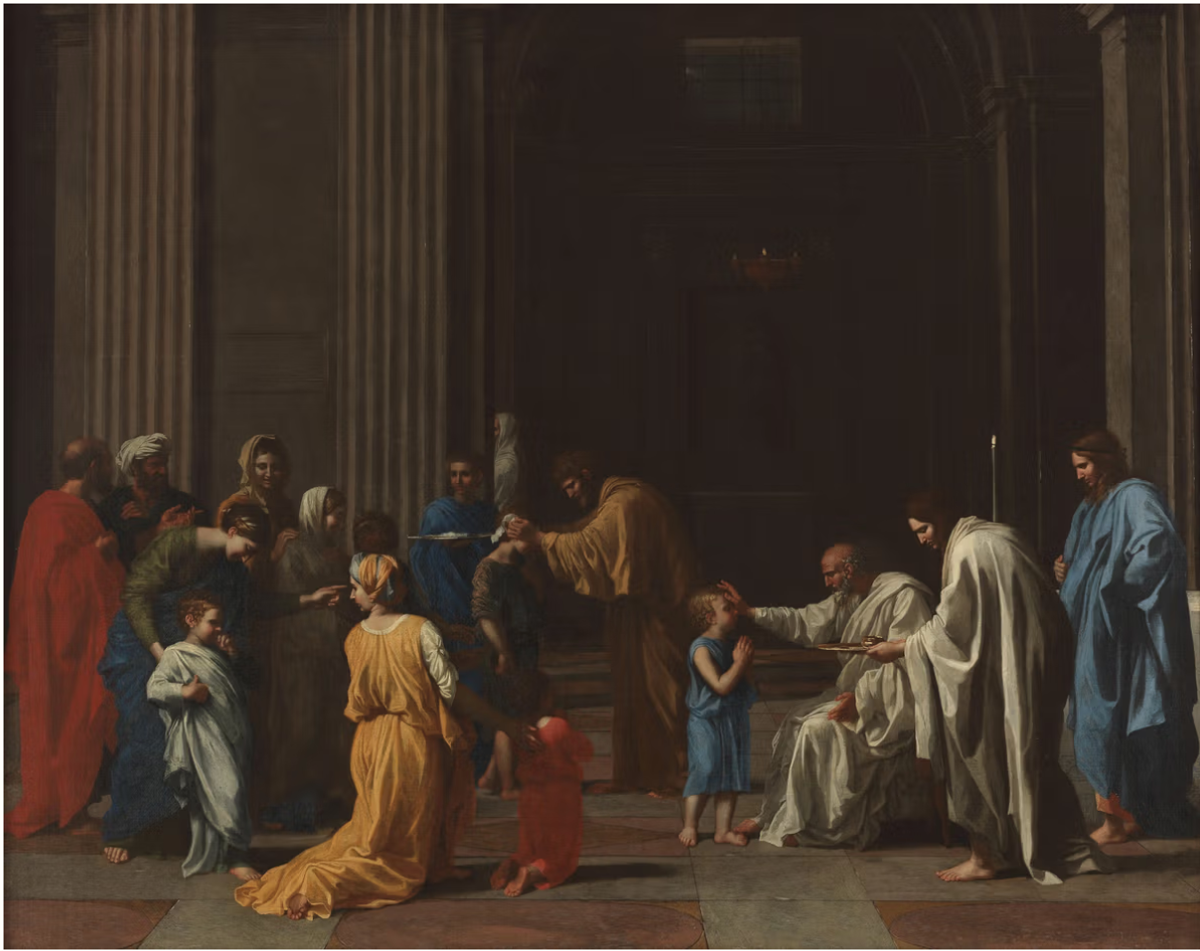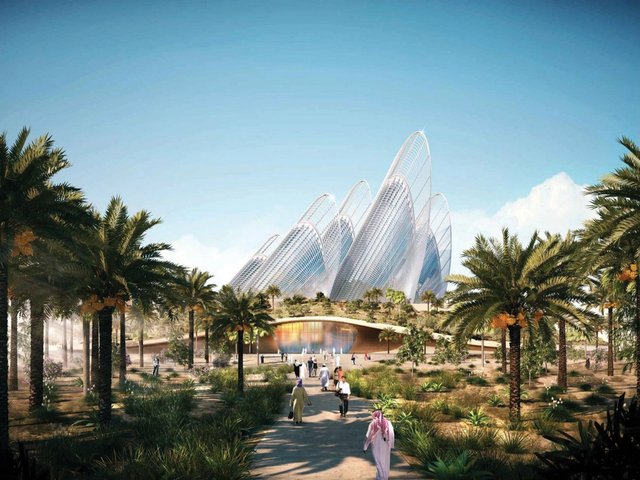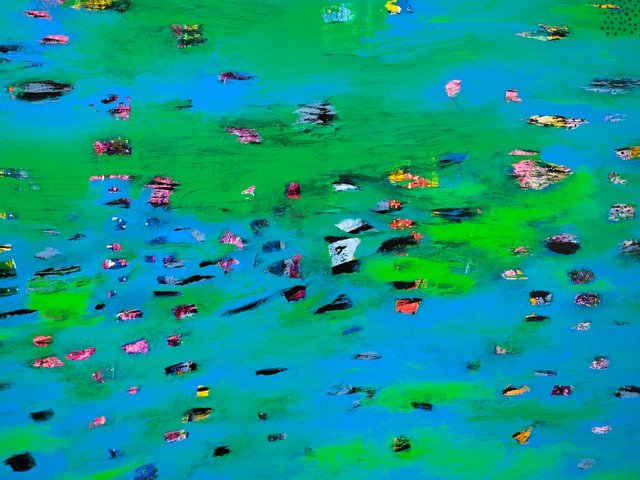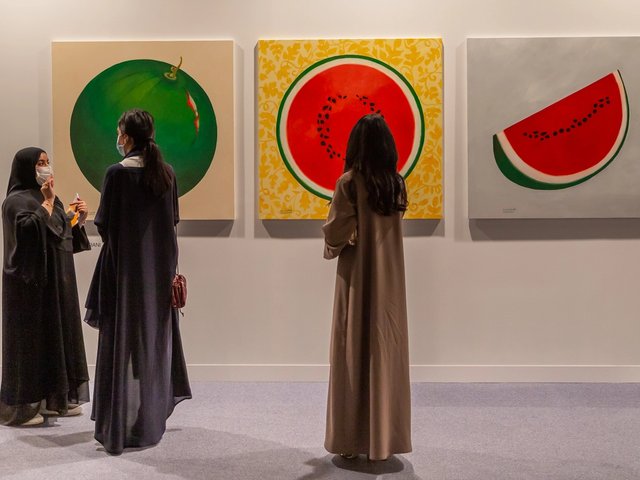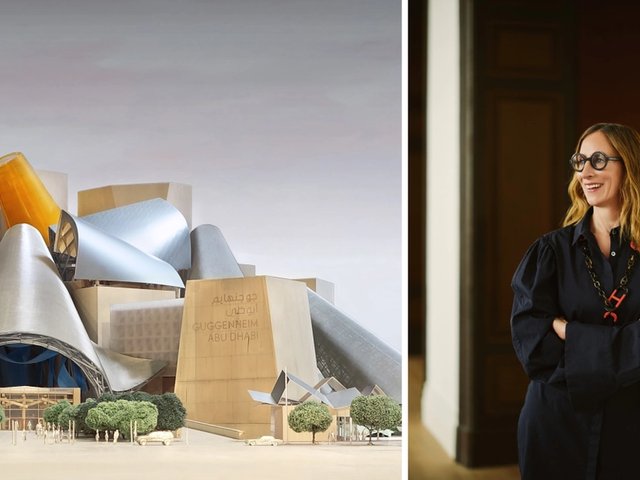After years of being inaccessible, Abu Dhabi’s Department of Culture and Tourism will be making its vast holdings of art and artefacts public in the coming year. The collections began under Sheikh Zayed, the founding father of the UAE, and pre-date the country’s confederation, with the first acquisitions being made in 1968. The works now number in the thousands and while some have been periodically loaned to exhibitions, the totality of what DCT holds has remained unknown.
Now, says the DCT's chairman, Mohamed Khalifa Al Mubarak, the government department will publish the catalogue online, with research opportunities available for study of the objects, and use the collection as a repository for loans. A substantial portion will go on long-term loan to the Zayed National Museum and the Guggenheim Abu Dhabi, which are slated to open this year and next year respectively, as well as other local museums such as Louvre Abu Dhabi, and others will travel to museums both nationally and internationally.
“The process of collecting art started off with the idea that at one point in our time, we [knew we wanted] to tell a beautiful story of our universal love for culture and art,” Al Khalifa says. “We have thousands of pieces within this collection, everything from contemporary art to different artistic movements throughout history, to archaeology from pre-history to today. It’s a mirror of what we want to represent when it comes to our cultural institutions, which is a celebration of global culture.”
To mark the shift, DCT is holding a series of public displays of key works, starting with the presentation of Nicolas Poussin’s Confirmation at Louvre Abu Dhabi this week. The important mid-17th-century work comes from Poussin’s series depicting the Seven Sacraments, or holy rituals as defined by the Catholic Church.
Confirmation had previously been held in Britain for 240 years, and is of such significance that the UK government attempted to block it from leaving the country. The export bar, put in place when it was offered for sale by the 11th Duke of Rutland in 2022, gave UK institutions approximately a year to raise the £19m needed to match the offer made by its prospective buyer, now presumed to be DCT. Evidently the gambit was not successful, and the work is now on show alongside Poussin’s Self-portrait, on loan from the Musée du Louvre in Paris.
“It's a stunning painting that sat in private hands, and now there's going to be a massive light shed on it at the Louvre Abu Dhabi,” says Al Mubarak, adding that many of DCT’s artworks came from private collections and will be seen publicly for the first time.
DCT’s Modern and contemporary holdings include works by Jean-Michel Basquiat, Andy Warhol, and Yayoi Kusama, as well as paintings by early Abu Dhabi contemporary artists such as Mohamed Al Mazrouei and Mahmoud Al Ramahi. While less starry, this section of DCT’s collection highlights its important role in preserving the art history of the young country.
When the Guggenheim Abu Dhabi opens next year, Al Mubarak says, around 30% of the works on display will be from the DCT collection, with the remainder from the Guggenheim Abu Dhabi collection—that is, the works acquired through the museum’s decision-making processes. But, the chairman underlines, all the works are ultimately part of the same Abu Dhabi collection. While this might seem obvious (or indeed confusing), it reveals the shift towards greater Abu Dhabi authority over the museums that has occurred throughout the Saadiyat Cultural District project.
When the Guggenheim Abu Dhabi was first conceived, in 2007, it was part of the Tourism Development & Investment Company (TDIC), a semi-private Abu Dhabi entity, and the museum’s offices were at the Guggenheim in New York.
In 2012, TDIC was merged into the newly created government department of DCT, bringing its cultural initiatives more closely under the direction of the Abu Dhabi leadership. Sources say that at this point, Abu Dhabi began demanding greater accountability over the museum, seeking to own the project as an Abu Dhabi enterprise rather than have it run as an adjunct department out of New York. The Guggenheim Abu Dhabi’s offices moved to the Corniche, Abu Dhabi’s seaside road—with the next move soon to Saadiyat.
“The Saadiyat Cultural District becomes more of a reality every single day,” Al Mubarak says. “You walk inside the Natural History Museum today—right now—and some of our fossils are being prepped. At the Guggenheim Abu Dhabi, you can walk in each gallery. And at the Zayed National Museum, the exhibits are being put in as we speak.”


